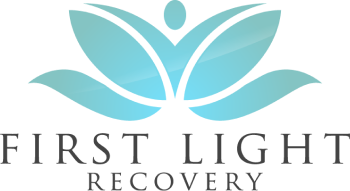Personality refers to a person’s way of thinking, behaving, and feeling that makes them different from other people. One’s personality is influenced by environment, experiences, and inherited characteristics. People with personality disorders usually don’t realize their behavior and thoughts are problematic.
What is a personality disorder?
A personality disorder is a mental illness that involves long-term disruptive patterns of thinking, behavior, emotions, and relating to others. This causes considerable limitations and problems in various aspects of life, including relationships, work, school, and social functioning.
Personality disorders often begin in early adulthood or teenage years and develop as individuals age. It is estimated that roughly 9% of American adults have some form of personality disorder. And approximately 6% of the global population has a personality disorder.
People with a personality disorder may not realize how their troubling behavior and emotions negatively affect others.
Different types of personality disorders
The Diagnostic and Statistical Manual of Mental Disorders (DSM-5) recognizes ten types of personality disorders categorized into three clusters. These three clusters are based on the common characteristics and symptoms that the disorders share.
Cluster A personality disorders
Cluster A personality disorders are characterized by unusual and eccentric thinking or behaviors. They include:
- Paranoid personality disorder: This condition is characterized by paranoia, the pervasive distrust and suspicion of others without sufficient reason for doubt. Individuals with paranoid personality disorder usually have an unjustified belief that others are trying to demean, threaten, or harm them.
- Schizoid personality disorder: People with this condition exhibit patterns of detachment in interpersonal relationships and usually appear cold or indifferent to others. They have a limited range of emotional expressions when associating with others and don’t take pleasure in most social activities.
- Schizotypal personality disorder: This condition is marked by social anxiety and consistent patterns of intense discomfort. People with schizotypal personality disorder are hindered from getting into close relationships with others due to their odd behaviors and distorted perceptions of reality.
Cluster B personality disorders
Cluster B personality disorders are marked by erratic, dramatic, and overly emotional behavior. They include:
- Antisocial personality disorder (ASPD): People with this condition may show disregard for other people’s feelings. They lack respect for others and don’t conform to socially accepted norms and rules. They may break the law and cause emotional and physical harm to people around them. People with ASPD may also refuse to take responsibility for their actions.
- Borderline personality disorder: Also known as an emotionally unstable personality disorder (EUPD), a borderline personality disorder is characterized by difficulty with emotional regulation, impulsive behavior, mood swings, low self-esteem, and subsequent relationship challenges.
- Histrionic personality disorder: Histrionic personality disorder is characterized by a distorted self-image and intense, unstable emotions. People with this condition tend to depend on others’ approval to feel worthy. They have an overwhelming need to get desired by others and may exhibit dramatic behavior to satisfy their need for attention.
- Narcissistic personality disorder: People with this condition believe they are superior, have fantasies of power, lack empathy, and have an excessive need for admiration and praise. Their behavior and thoughts usually stem from low self-esteem.
Cluster C personality disorders
Cluster C personality disorders are marked by intense anxiety and fearful thinking or behavior. Cluster C personality disorders include:
- Avoidant personality disorder: People with this condition tend to steer clear of situations that require them to spend a significant amount of time with others. They are overly sensitive to disapproval and often worry about being rejected in social settings. While they would like to interact with others, they avoid it for fear of rejection.
- Dependent personality disorder: Individuals with this condition have a constant and excessive need to be taken care of by others. They need constant reassurance, are submissive, and tend to experience difficulty making decisions. They usually become very close to someone and spend a great effort trying to please that person. People with this condition are clingy and fear being separated from specific people.
- Obsessive-compulsive personality disorder (OCPD): People with OCPD have an intense and constant need to be in control, order, and perfectionism with no room for flexibility. This ends up interfering with or slowing them down from completing tasks. It can also interfere with their relationships.
Diagnosis of Personality Disorder
These conditions can be challenging to diagnose, given that most people with these conditions don’t think there’s a problem with how they think or behave. Because of this, they don’t seek medical attention. Instead, a social agency or their loved ones may refer them to a psychiatrist because of their unusual behavior.
People may seek treatment for several reasons. These include anxiety, depression, substance abuse, or problems created by their condition, such as unemployment or divorce, and not the disorder itself.
If a healthcare provider suspects someone of having a personality disorder, they may conduct a diagnosis through:
- Physical exam: The healthcare professional may perform a physical exam and ask questions about someone’s health. Sometimes, a personality disorder can be due to an underlying physical health problem. The evaluation may entail lab tests and screening tests for drugs and alcohol.
- Psychiatric evaluation: A mental health professional, like a psychiatrist, may ask questions about a patient’s thoughts, feelings, and behavior. They may also obtain information about a patient from their family members.
- Diagnostic criteria in the DSM-5: A healthcare professional may compare a patient’s symptoms to the criteria in the DSM-5 as published by the American Psychiatric Association.
Treatment of Personality Disorder
The healthcare provider will recommend treatment based on the personality disorder someone is suffering from.
Psychotherapy (talk therapy) is the primary way of managing personality disorders. A mental health professional can help patients learn about their thoughts, moods, feelings, and behavior during psychotherapy. This way, they can learn how to cope with stress and manage their disorder.
A therapist can use different types of talk therapy to treat a patient. The mental health professional will determine the best for a patient based on their conditions. Talk therapy may be provided in groups, individual sessions, or sessions that include friends and family.
There are psychiatric medications that a mental health provider can prescribe to help with various symptoms of personality disorder. These include antidepressants, mood mobilizers, anti-anxiety medications, and antipsychotic medications.
In some cases, a personality disorder may require that a patient be admitted to a hospital or residential treatment program. This is usually the case if a patient can’t care for themselves properly. Patients may also be admitted to a residential facility when they are a danger to themselves and others.
The Best Residential Mental Healthcare Facility in Orange County
First Light Recovery (FLR) is a residential mental health facility in Orange County. We offer social rehabilitation treatment programs tailored to help clients whose adaptive functioning is impaired and who are experiencing mild, moderate, or chronic psychotic impairment. Contact us today and let us help you through your or your loved one’s journey to mental health recovery.




